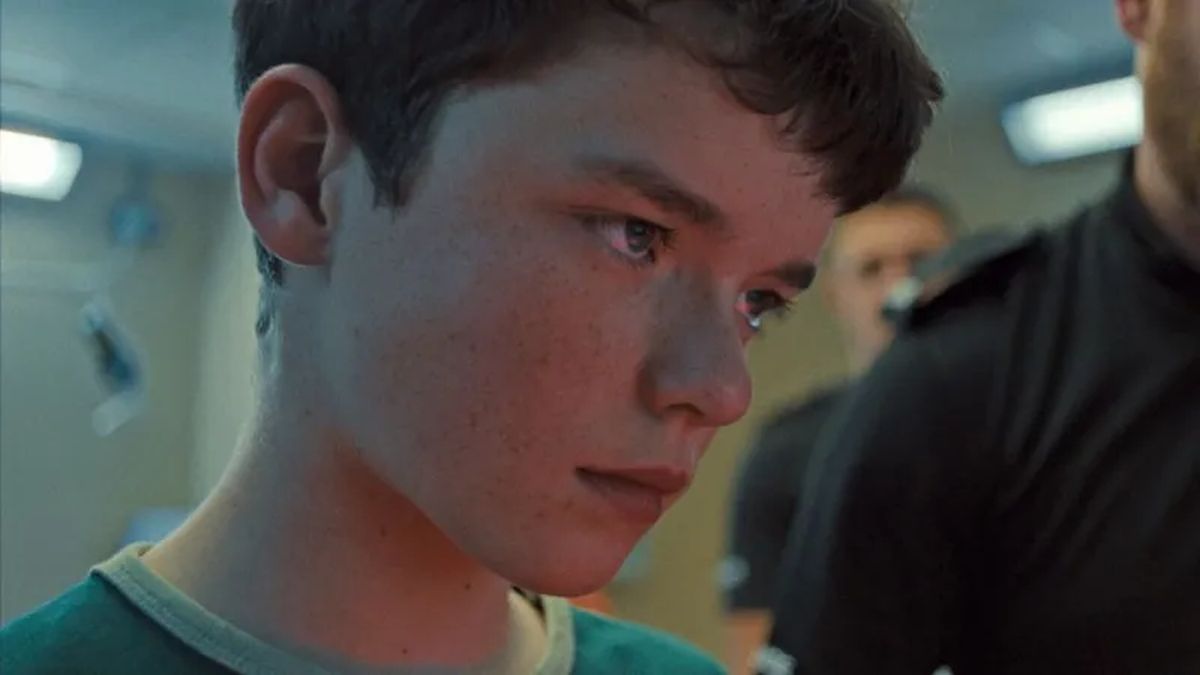“Adolescence is a loud wake-up call to parents who are raising children in times of social media… I grew up on conversations they speak in emojis… I grew up on books they scroll reels… I grew up on self-discovery they are surrounded by comparisons… the pandemic is NOW! We just don’t see it. This gut-wrenching show is more a mirror to parenting and social media commentary than anything I have seen or been impacted by recently (sic),” wrote Karan Johar on Netflix’s hit miniseries Adolescence.
And it’s not just the filmmaker, who is calling the four-part series, a guide to parenting. Other experts are also calling on parents to watch the Netflix show, as it shines light not only on incels and toxic masculinity, but also on the insidious meanings behind common emoticons being used by teenagers while interacting with their peers on social media.
For instance, in episode two of the series, which deals with a 13-year-old boy (played by Owen Cooper) being accused of the murder of his female classmate, Katie, DI Luke Bascombe, played by Ashley Walters, learns that he completely misinterpreted a series of emojis left by Katie on Jamie’s Instagram profile, believing they were flirtatious. It’s only when his teenage son Adam (Amari Bacchus) breaks down the use of emojis that he comes to realise that there’s a darker meaning behind these icons.
So, what exactly do the emojis mean in Adolescence? Read on for a full breakdown.
Red pill
In the second episode of Adolescence, Adam, the son of DI Luke Bascombe, refers to the red pill emoji, saying it isn’t just from The Matrix anymore. “The red pill is like, ‘I see the truth’. It’s a call to action by the manosphere,” he tells his father in the show.
The manosphere refers to a varied collection of websites, blogs, and online forums promoting masculinity, misogyny, and opposition to feminism.
In the world of incels — men who are involuntarily celibate — the red pill means ‘seeing the truth’ — specifically, the belief that society is lying about gender equality. It’s a rallying cry for men who think they’ve been wronged by women and the world at large.
Dr Robert Lawson, an expert on sociolinguistics from Birmingham City University told the Daily Mail, “In the manosphere, those who have been ‘red-pilled’ see the world as it really is, understanding the so-called ‘real’ nature of women’s behaviour and dating preferences.”
Brette Steele, senior director for Preventing Targeted Violence at the McCain Institute, also told CNN, “For incels, the reality presented to them by the red pill is that love and sexual satisfaction are commodities that women deny them, and that women, not men, control the sexual aspects of society. Under this assumption, sex and relationships become almost like a game with specific challenges to overcome.”
Kidney bean
Adam also tells his father in Adolescence that the kidney bean emoji is also used to identify or self-identify as an incel.
In real life, the kidney bean emoji, which seems harmless, takes on an insidious meaning on platforms like Reddit and 4Chan, say experts studying the incel community. Experts note that the kidney bean is very similar to the coffee bean — a meme used by incel communities to mock and belittle women.
Dynamite
In the show Adolescence, Katie, the girl stabbed by the protagonist, has used the dynamite emoji in her conversations. But what does this emoji mean?
According to the show, the emoji refers to an “exploding red pill” to show someone is an incel.
100 emoji
For many of us, the use of the 100 emoji is to provide validation to a thought or remark. However, as Adolescence depicts that’s not always the case. The show explains that adolescents use it as another incel term, related to the ‘80 to 20 rule.’
This is a misguided theory that suggests that 80 per cent of women are attracted to only 20 per cent of men. This imbalance justifies “tricking” women into relationships.
As per the Incels Wiki: “Many incels perceive their inceldom to be caused by the 20 per cent most dominant men hoarding 80 per cent of the females, which is a somewhat exaggerated view of the facts, except perhaps for a few subcultures and online dating platforms with very unequal sexual markets.
“For this reason, many incels rather use 80/20 as a meme to warn of the damaging effects of our current dating scene and increased competitiveness in online dating.”
Different-coloured hearts
While you might assume that a heart emoji just means love, in emoji slang each different colour actually has its own hidden meaning. As Adam explains to his father: “Red means love, purple horny, yellow ‘I’m interested, are you interested?’, pink ‘I’m interested but not in sex’, orange ‘you’re going to be fine’, it all has a meaning — everything has a meaning.”
However, that is just one way of using heart emojis and there are many other interpretations online. In the most common view, a red heart represents classic love or romantic feelings. An orange heart is used for warmth, enthusiasm, or love between friends and family. Meanwhile, a blue heart is used less for romance, and more frequently to express friendship or to say that something is cute.
Likewise, a black heart doesn’t necessarily have any associations with death or dark emotions and is more often used as an alternative to the red heart for aesthetic reasons.
Experts speak
Following the release of the show and it earning rave reviews, many adults and child experts note that Adolescence serves as a stark reminder for parents that the digital world their children inhabit is constantly evolving, as is how they communicate online.
Amit Kalley, who spent a decade working in British schools, told Daily Mail, “To most parents, emojis are seen as pretty harmless, innocent things but when there’s a pill or kidney beans, I don’t think parents will think twice about what those actually represent.
“They might just think it’s their kids being silly. I think that scene was incredibly powerful in showing the disconnect there is between 21st century children and teenagers and parents.”
He further added, “I think there is a huge, huge gap in parental and even teacher knowledge on these topics and I think we need to do a hell of a lot more in raising awareness, in getting parents in the know and getting schools trained.”
Even Jenny Warwick, a British Association for Counselling and Psychotherapy therapist and parenting expert concurs on the use of emojis, urging parents to speak to their children more often. “Keep an open and curious mindset. You want to encourage an open dialogue with no judgement. Ask questions like: “What do you think about how some people talk about gender online?”’ she was quoted as telling Metro.
With inputs from agencies


)
)
)
)
)
)
)
)
)



